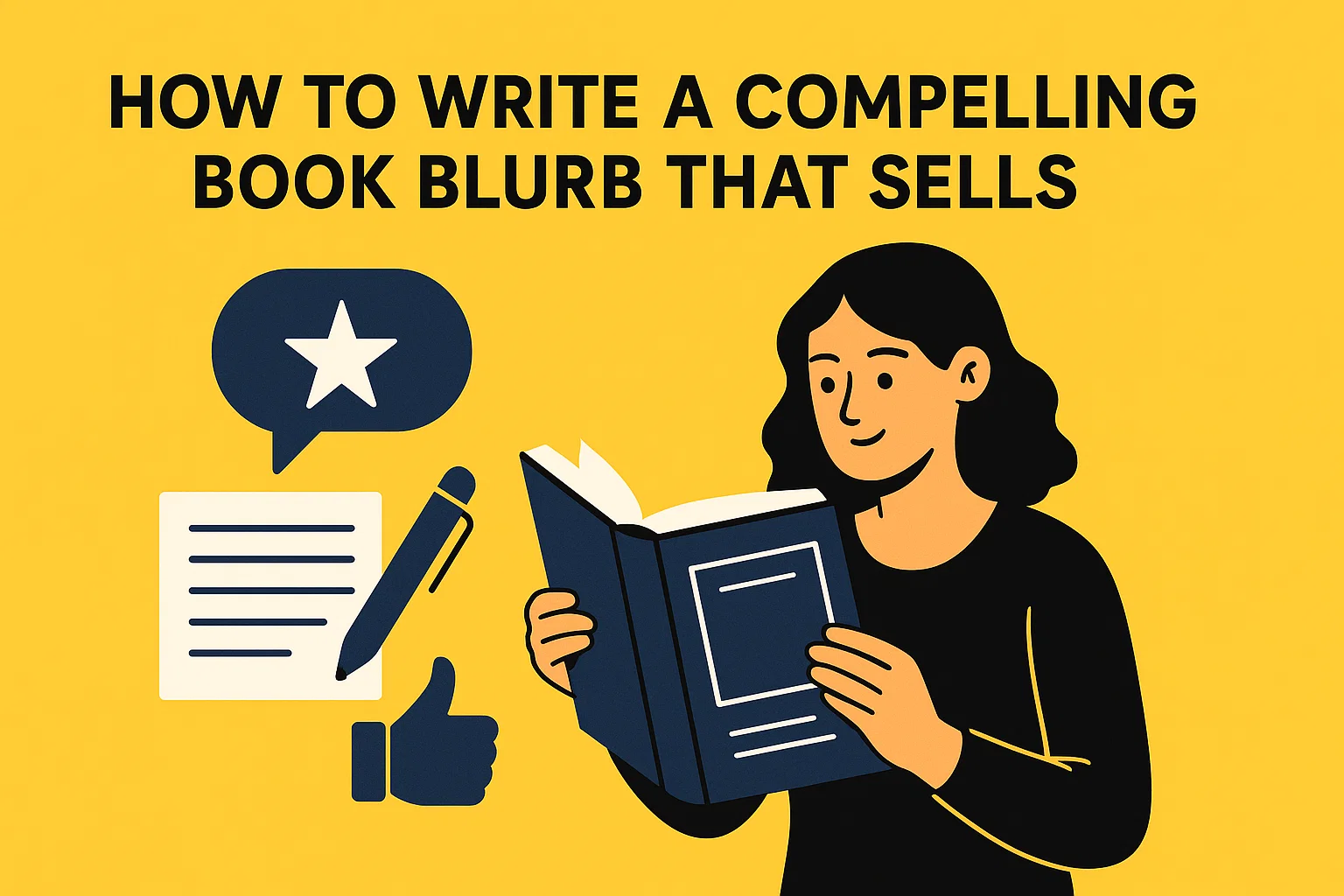When it comes to selling books, there’s one essential element that can make or break your success: the book blurb. While a well-written story and engaging characters are key to the book’s content, the book blurb is the first thing potential readers will see. It’s your sales pitch—the hook that convinces a reader to click “buy” or pick up your book off the shelf.
Writing a compelling book blurb isn’t as simple as summarizing your story. It’s about striking the perfect balance between intrigue, clarity, and enticing potential readers without giving away too much. Whether you’re self-publishing or working with a traditional publisher, crafting a blurb that sells is crucial to your book’s success.
In this blog, we’ll explore how to write a compelling book blurb that not only grabs attention but also persuades readers to take the plunge and buy your book.
1. Understand the Purpose of a Book Blurb
Before diving into the mechanics of writing a book blurb, it’s important to understand its purpose. The book blurb is essentially a marketing tool. Its job is to:
- Grab the reader’s attention within seconds.
- Create curiosity without giving away too much of the plot.
- Highlight the core conflict or emotional pull of your story.
- Leave the reader eager to discover more by purchasing the book.
A great book blurb does all of this while staying concise and clear. It should act as a teaser that leaves just enough to the imagination, making readers feel compelled to turn the first page.
2. Write a Catchy Opening Line
The first sentence of your book blurb should immediately draw readers in. Think of it like the opening line of a conversation—if it’s interesting enough, readers will want to keep listening.
- Hook your audience by hinting at the core conflict, mystery, or central character.
- Use powerful language that conveys the tone and emotion of the book.
For example, in a thriller:
“A killer is on the loose, and the clock is ticking.”
In a romance:
“He was everything she never wanted—until she met him.”
3. Highlight the Main Conflict or Question
At the heart of every story lies a conflict—the driving force that propels the plot forward. Your book blurb should clearly indicate what the central conflict or problem is, but without giving away spoilers.
- For fiction, focus on the main character’s dilemma or quest.
- For nonfiction, focus on the problem your book solves or the key lessons it offers.
For example, in a mystery novel:
“When detective Jane Doe is called to a crime scene, she discovers a twisted web of lies that leads her to a shocking conclusion.”
For a self-help book:
“Do you feel stuck in life? This book reveals simple, actionable steps to regain control and achieve your dreams.”
This sets up the reader’s expectation and makes them want to read more.
4. Keep It Short and Sweet
A book blurb should be concise—a few short paragraphs, or around 150-200 words—enough to convey the essential elements of your book without overwhelming the reader. Think of it as a teaser rather than a full synopsis.
- Focus on the most compelling elements of your book.
- Avoid too many details or subplots—keep it focused on the main story arc or message.
- Use clear, direct language that’s easy to understand.
5. Include a Sense of Urgency or Mystery
To make your book blurb even more compelling, create a sense of urgency or mystery that entices readers to pick up the book right away. You want them to feel like they need to know what happens next.
- Use phrases like “time is running out,” “everything changes when,” or “you won’t believe what happens next.”
- Leave unanswered questions that the reader will be eager to resolve by reading the book.
For example:
“She thought she knew the truth. But the deeper she digs, the more dangerous the truth becomes…”
This creates intrigue and makes the reader feel compelled to find out what happens next.
6. Showcase the Genre’s Unique Elements
Your book blurb should reflect the tone and style of the genre you’re writing in. Different genres have distinct expectations, and your blurb should align with these. For instance:
- Thriller/Mystery: Fast-paced, suspenseful, and dramatic language.
- Romance: Emotional, heartfelt, and engaging.
- Fantasy/Sci-Fi: World-building, magical elements, and conflict.
- Nonfiction: Clear, actionable insights, or promises of valuable takeaways.
Make sure the voice of your blurb matches the tone of the story inside the book. For example, a romantic comedy should feel light and fun, while a psychological thriller should feel dark and suspenseful.
7. End With a Call to Action (CTA)
A great book blurb isn’t just about making readers curious—it’s also about getting them to take action. The last line should encourage the reader to buy your book, download it, or take the next step.
You can use phrases like:
- “Find out how it ends. Get your copy now!”
- “Ready to discover the truth? Download now!”
- “Join the adventure—start reading today.”
This call to action invites readers to commit to your book and ensures that your blurb ends with a clear direction.
8. Edit and Polish Your Blurb
Your book blurb is just as important as the content of your book itself. It’s your first impression—and first impressions matter. Here are some editing tips:
- Read your blurb aloud to ensure it flows smoothly.
- Remove unnecessary words and make it tight and impactful.
- Avoid spoilers—don’t give away the ending or major plot twists.
- Ask for feedback—let others read your blurb to see if it sparks curiosity.
9. Use Professional Help if Necessary
If you’re struggling to craft a compelling book blurb, consider hiring a professional. Many authors find that working with an experienced copywriter or book marketing expert can take their blurb to the next level. An expert blurb writer knows how to target your audience, highlight your book’s best elements, and ensure it stands out in a crowded marketplace.
Conclusion: Crafting the Perfect Book Blurb
Writing a compelling book blurb is one of the most important aspects of book marketing. Your blurb is the first thing potential readers will see, and it can be the deciding factor in whether they choose to purchase your book. By focusing on a strong hook, clear conflict, concise writing, and a sense of mystery, you can craft a blurb that intrigues readers and encourages them to dive into your book.
At Book Planets, we understand the importance of a well-crafted book blurb. If you need help writing or refining your book blurb, our team of copywriters and marketing experts can help you create one that sells.
Frequently Asked Questions
1. How long should my book blurb be?
A book blurb should generally be 150-200 words—enough to capture the essence of your book without overwhelming the reader.
2. Should I include spoilers in my book blurb?
No, avoid spoilers. The goal is to intrigue readers without giving away key plot details or the ending.
3. Can I write my book blurb myself?
Absolutely! But if you’re struggling, consider getting professional help to ensure your blurb captures the right tone and sells your book effectively.
4. What is the difference between a book blurb and a synopsis?
A book blurb is a short, marketing-focused summary designed to attract readers. A synopsis, on the other hand, is a more detailed overview often used for submissions to publishers or agents.
5. How do I know if my book blurb is working?
Test it! Ask friends, beta readers, or professionals for feedback. If it sparks curiosity and makes readers want to know more, it’s likely working.

